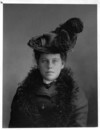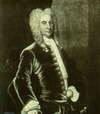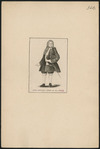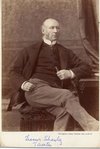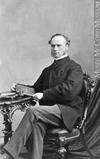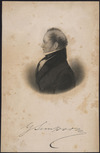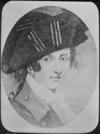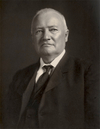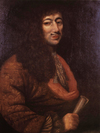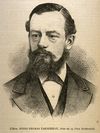to join a colonial expedition against Canada. Troops under the command of Major-General Fitz-John Winthrop were to proceed against Montreal via Lake Champlain, while Sir William
north lay Montreal. Though separated by impenetrable wilderness, the two settlements were joined by an almost continuous waterway consisting of the Richelieu River, Lake Champlain, Lac Saint-Sacrement
Champlain and Du Gua de Monts discovered the river in 1604; d. before 1616
second in command, an offer that Lévis was glad to accept. No sooner had the expedition left Montreal, however, than it was recalled and sent post-haste to Lake Champlain. Word had been received that Major
an unsigned article entitled “Particulars of the late disastrous affair on Lake Champlain,” which was published shortly after the Plattsburgh débâcle. Sewell admitted authorship but asserted that the
for the contractor who was building the eastern division of the Ogdensburg and Lake Champlain Railroad. “I was very glad that you have at length succeeded in obtaining something like a footing on any
Champlain Railroad, where Francis had been hired as an assistant engineer, and the brothers were spurred on by a resolve “to fit themselves for the coming Railway Era in their own country.” Their sojourn in
Railway to form the Montreal and New York Railroad, of which Simpson was also a director. Another road in which Simpson was interested, and on whose board he sat as a director, was the Champlain and St
chaplain to Lake Champlain in 1666. Later, in 1674, he tried to exercise a calming influence in the conflict that sprang up between Governor
lieutenant-colonel of the 34th Foot. He took part in the operations in 1776 that drove the Americans from Quebec and up Lake Champlain to Ticonderoga (N.Y.). When Major-General John
working as a clerk to the military secretary at Halifax. During the War of 1812 he was in Montreal. On 15 May 1817, at Champlain, N.Y., he married Louisa, younger daughter of Daniel
* Des Ormeaux, or events such as the battle of the Monongahela. He also wrote a long “Exposé des principaux événements arrivés en Canada depuis Jacques-Cartier jusqu’à la mort de Champlain,” which came
of Dieppe, one of the Compagnie des Cent-Associés who had left France to relieve Champlain
Amherst* at Crown Point on Lake Champlain. When Amherst decided to delay his invasion of Canada until spring of the following year (1760), Stobo returned to Williamsburg carrying a letter from Amherst
settle in Canada and lived for about two years with Thomas Lanouguère* at Champlain, at the home of the seigneur of the region, François
. . . .
Taché would promote the first large commemorative monuments at Quebec, including that of Samuel de Champlain* (1898). Bent on embellishing
.
Indeed, since Champlain the governors had held the widest powers. Although the royal statutes of 1647 and 1648
writings of Samuel de Champlain*, Pierre-François-Xavier de
the counties of Champlain, Joliette, Berthier, and L’Assomption with Joseph-Édouard Cauchon*, the president, to get subsidies; the
Niagara peninsula were the Neutrals; south of Lake Ontario and as far east as Lake Champlain were the Five Nations Confederacy comprising, in past to west order, the Mohawks, Oneidas, Onondagas, Cayugas




